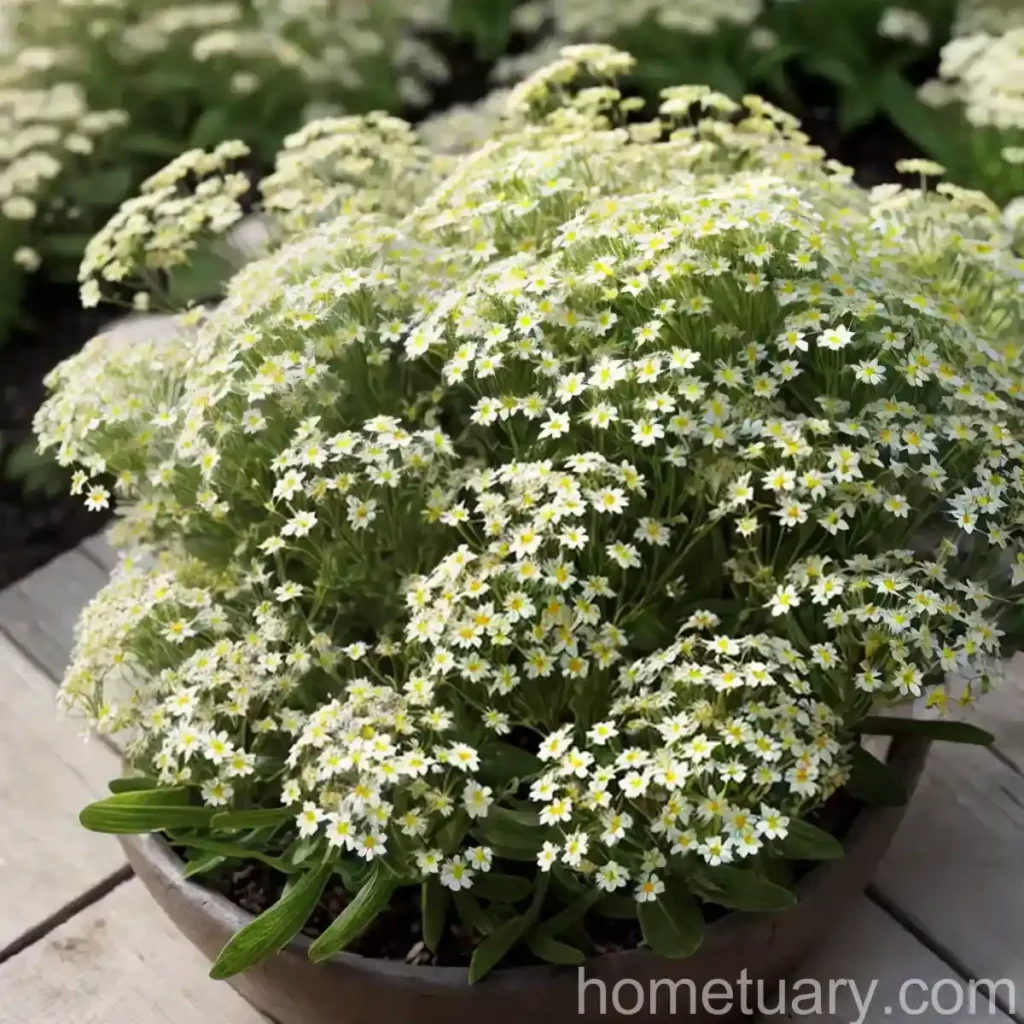The Fascinating World of Madwort (Alyssum wulfenianum ‘Golden Spring’)
Madwort, scientifically known as Alyssum wulfenianum ‘Golden Spring,’ is an enchanting plant that graces gardens with its delicate and vibrant beauty. In this comprehensive guide, we will delve into the various aspects of madwort, including its description, cultivation, care, uses, and much more. Whether you are a seasoned gardener or just venturing into the realm of horticulture, this article will provide you with valuable insights into the captivating world of madwort.
Madwort Plant Description
Madwort, or Alyssum wulfenianum ‘Golden Spring,’ is a perennial herbaceous plant that belongs to the Brassicaceae family. It is renowned for its clusters of small, golden-yellow flowers that exude a delightful fragrance, making it a popular choice for ornamental gardens and landscapes. The plant typically reaches a height of 6 to 12 inches and spreads to about 12 to 18 inches, creating a lush and vibrant ground cover.
Alyssum wulfenianum ‘Golden Spring’ Overview
Botanical Name: Alyssum wulfenianum ‘Golden Spring’
Common Name: Madwort
Plant Type: Perennial
Flower Color: Golden-yellow
Fragrance: Delightful and sweet
Height: 6 to 12 inches
Spread: 12 to 18 inches
Family: Brassicaceae
Growing Madwort Plant
Cultivating madwort can be a rewarding experience, as this delightful plant thrives in the right conditions and brings a splendid burst of color to the surrounding landscape. Let’s explore the key factors involved in growing madwort successfully.
Alyssum wulfenianum Cultivation Tips
Culture
Madwort is characterized by its resilience and adaptability, making it well-suited for various climatic conditions. When cultivated in the appropriate environment, it flourishes and showcases its vibrant blooms, adding a touch of elegance to the garden.
Uses
The uses of madwort extend beyond its ornamental value. It can be utilized in a range of applications, from landscaping and ground cover to attracting beneficial wildlife such as pollinators.
Water
Madwort prefers moderate moisture levels and well-drained soil. Adequate watering is essential, particularly during dry spells, to ensure that the plant remains healthy and vibrant.
Sunlight
Alyssum wulfenianum ‘Golden Spring’ thrives in full sunlight to partial shade. Providing the plant with the right amount of sunlight is crucial for encouraging robust growth and prolific flowering.
Fertilizer
Applying a balanced, all-purpose fertilizer in the spring can enhance the growth and blooming potential of madwort. However, it is important to follow recommended guidelines to prevent over-fertilization.
Soil
Well-drained, loamy soil with a slightly alkaline pH is ideal for madwort cultivation. Ensuring proper soil conditions is essential for the plant to establish strong roots and thrive.
Pruning
Regular deadheading and light pruning can help prolong the blooming period of madwort and maintain its compact, tidy appearance. Pruning should be conducted as needed to remove spent flowers and encourage new growth.
How to Propagate Madwort Plant
Propagating madwort can be achieved through several methods, including seed propagation and division. Each technique offers unique advantages and can be employed based on the specific requirements and preferences of the gardener.
Propagation Methods:
- Seed Propagation: Madwort seeds can be sown directly in the garden in the spring or started indoors and transplanted outdoors once established.
- Division: Dividing mature madwort plants is an effective way to propagate new specimens and rejuvenate existing plantings.
Container Gardening
Madwort can be cultivated in containers, allowing gardeners to enjoy its beauty on patios, balconies, and other confined spaces. When grown in containers, it is important to provide the plant with suitable growing medium, adequate sunlight, and regular care to promote healthy development.
Popularity
The enchanting allure of madwort has contributed to its popularity among gardeners and landscaping enthusiasts. Its vibrant blooms and low-maintenance nature make it a sought-after choice for adding ornamental charm to various outdoor settings.
Alyssum wulfenianum ‘Golden Spring’ Maintenance Tips
Maintaining madwort in optimal condition involves adhering to certain practices that contribute to its overall health and aesthetic appeal. By implementing the following maintenance tips, gardeners can ensure that their madwort plants thrive and continue to grace the landscape with their delightful presence.
Common Diseases and Pest Control
While madwort is relatively resistant to pests and diseases, certain environmental conditions and factors can still pose a risk. Understanding common diseases and pests that may affect madwort and implementing effective control measures is crucial for safeguarding the plant’s well-being.
Disease Diagnosis
Recognizing symptoms of common diseases such as powdery mildew and damping-off can enable prompt intervention and treatment, preventing the escalation of potential threats to madwort health.
Common Pests
Pests such as aphids and spider mites may occasionally target madwort plants, necessitating appropriate pest control measures to mitigate potential damage and maintain plant vitality.
Botanist’s Tips
- Aesthetic Pairings: Madwort can be beautifully paired with other low-growing perennials or used as a vibrant accent in rock gardens and border plantings.
- Pollinator Attraction: The fragrant blossoms of madwort attract bees, butterflies, and other pollinators, serving as a delightful addition to pollinator-friendly landscapes.
- Companion Planting: Consider planting madwort alongside species that complement its growth habits and environmental requirements, creating harmonious and visually appealing plant combinations.
Fun Facts
- Madwort has been prized for centuries for its ornamental and medicinal properties, earning a place in diverse cultural and horticultural traditions.
- The common name “madwort” is believed to stem from the plant’s historical use in treating rabies, stemming from the Old English word “mædwe,” meaning “cure for rabies.”
Links to External Resources
For further information on madwort and related topics, you may find the following resources valuable:
– Royal Horticultural Society: Alyssum
– University of Maryland Extension: Alyssum
– The Spruce: Growing Alyssum
In the next sections, we will explore more aspects related to madwort, including its landscape uses, flowering period, soil preferences, and wildlife attraction, providing a comprehensive guide to enthusiasts and gardeners seeking to cultivate and appreciate this remarkable plant.
The article would continue in a similar manner to cover the remaining topics as per the provided outline.















